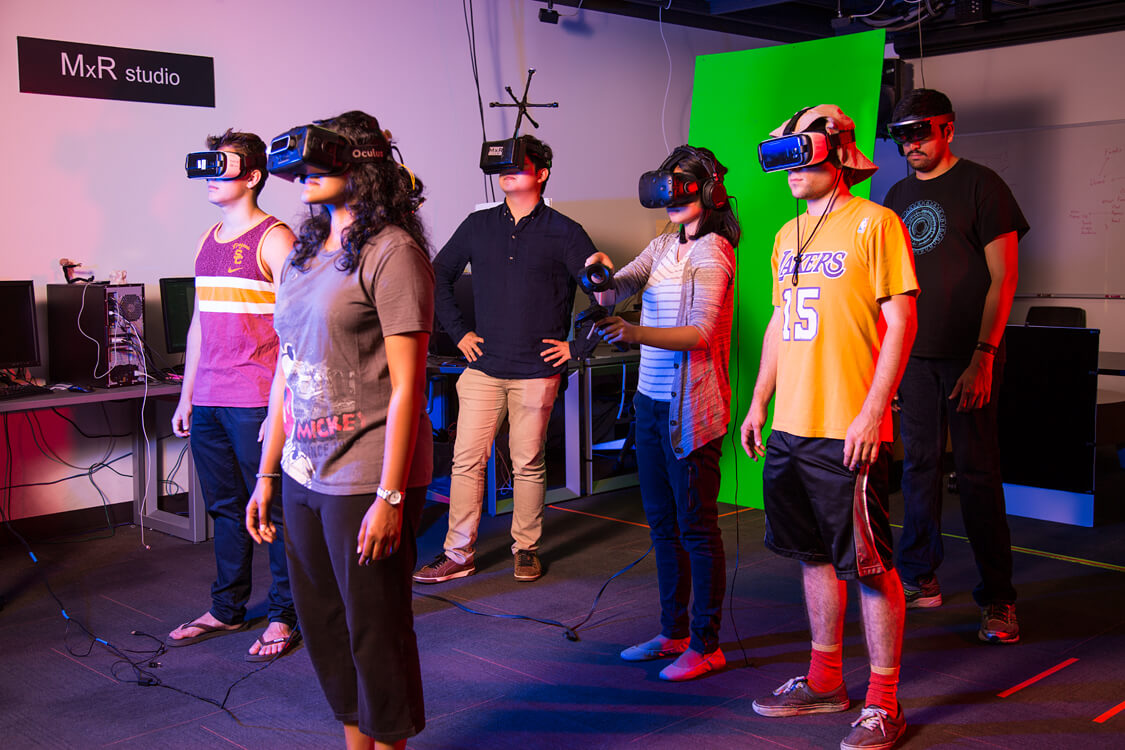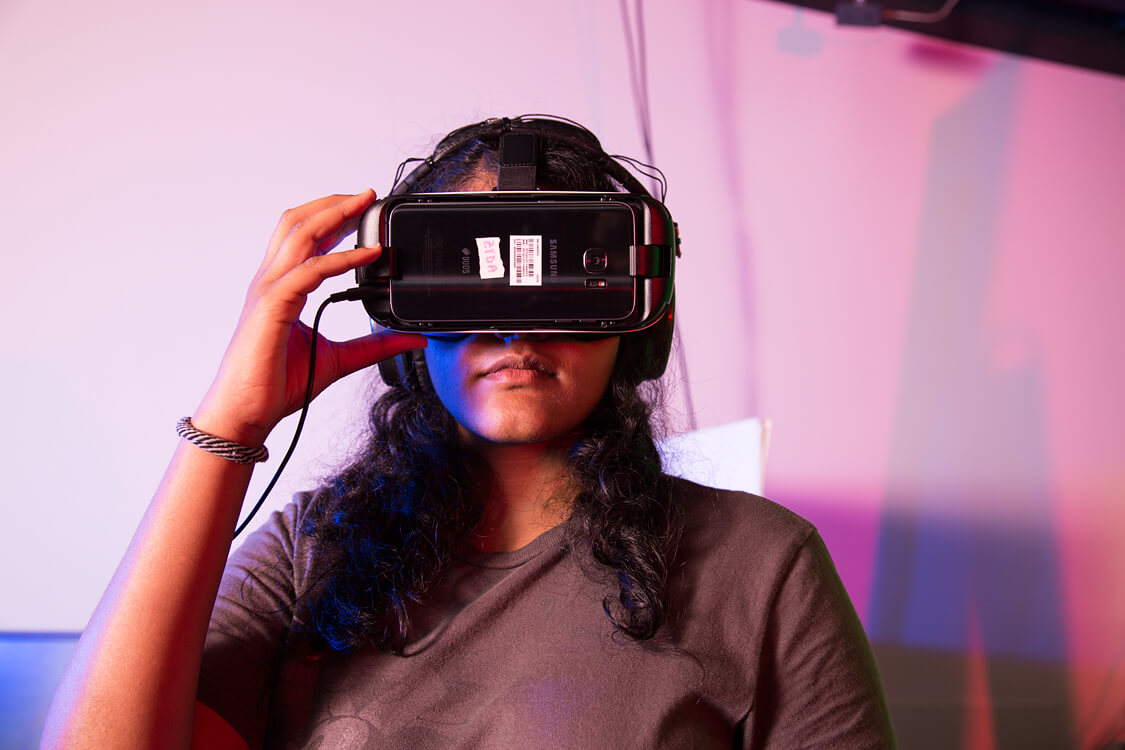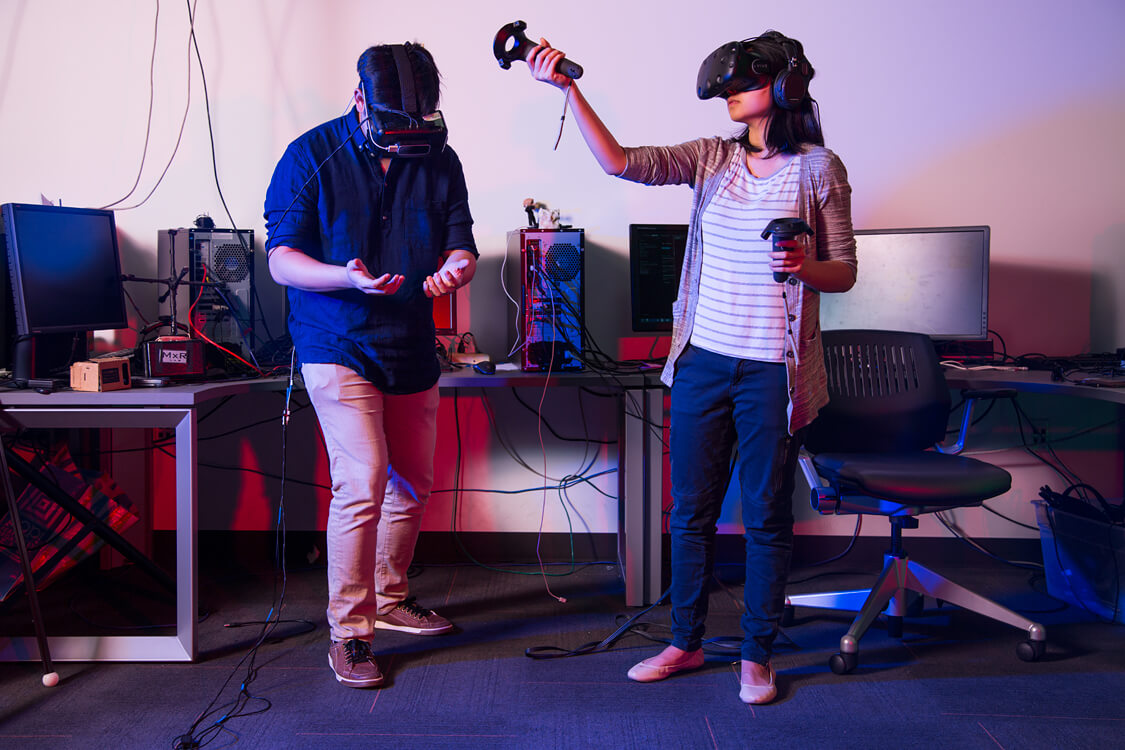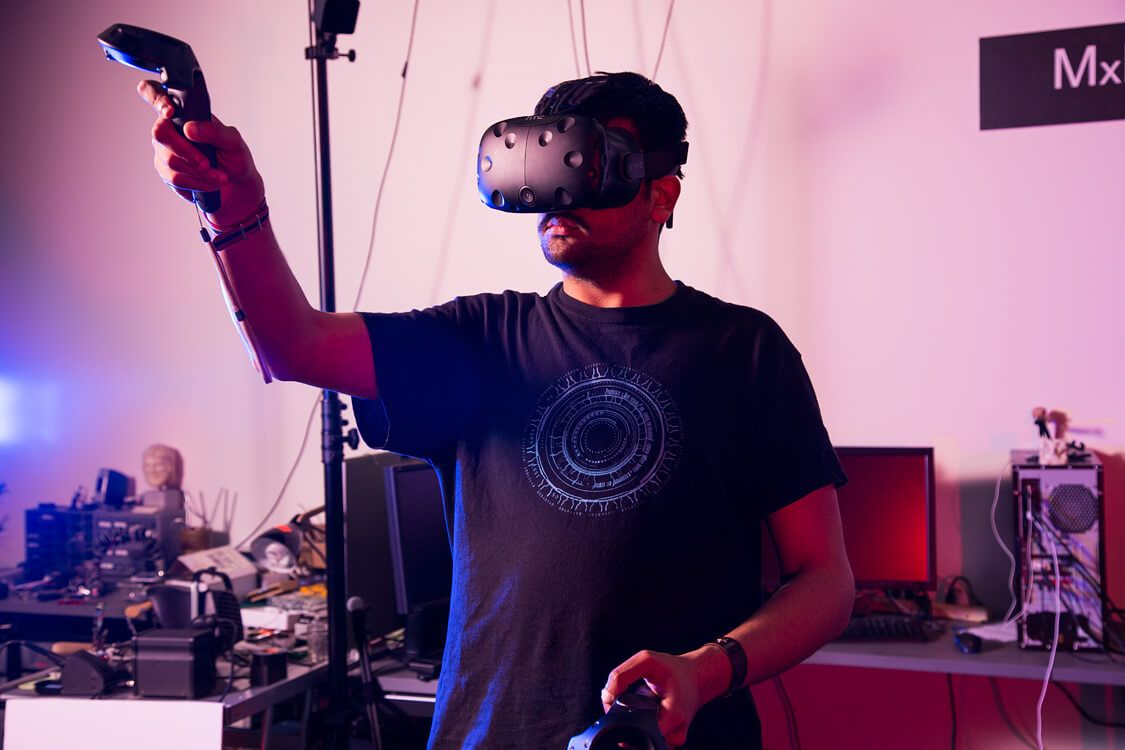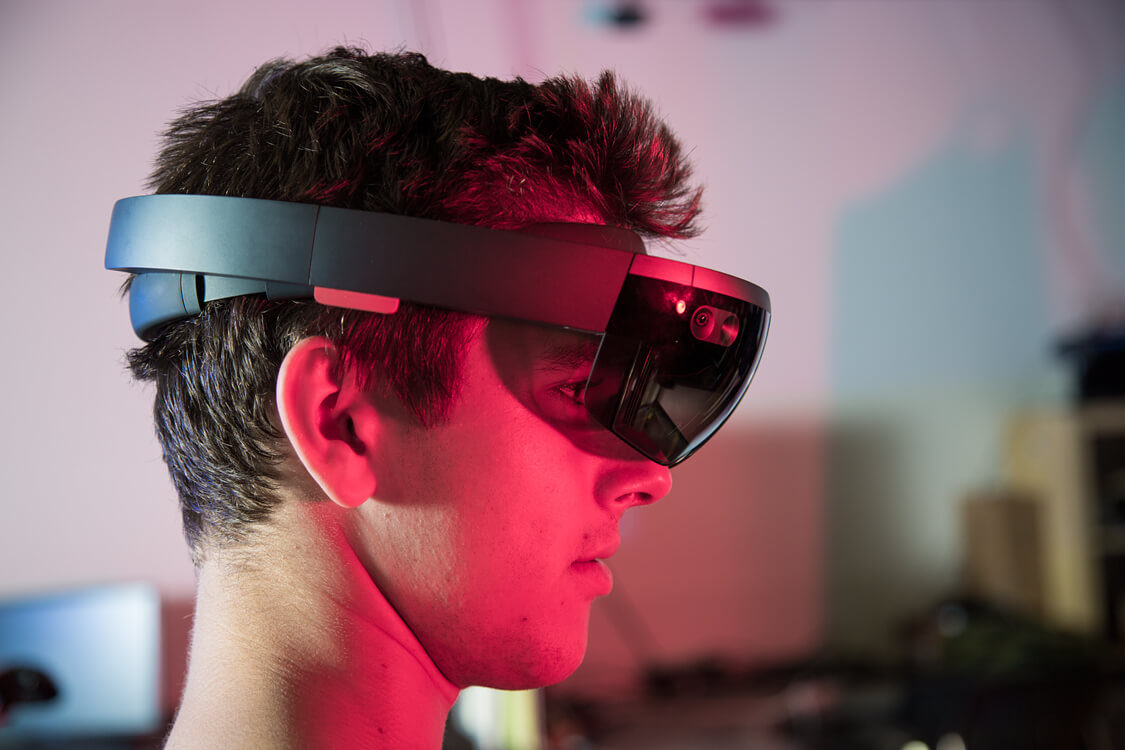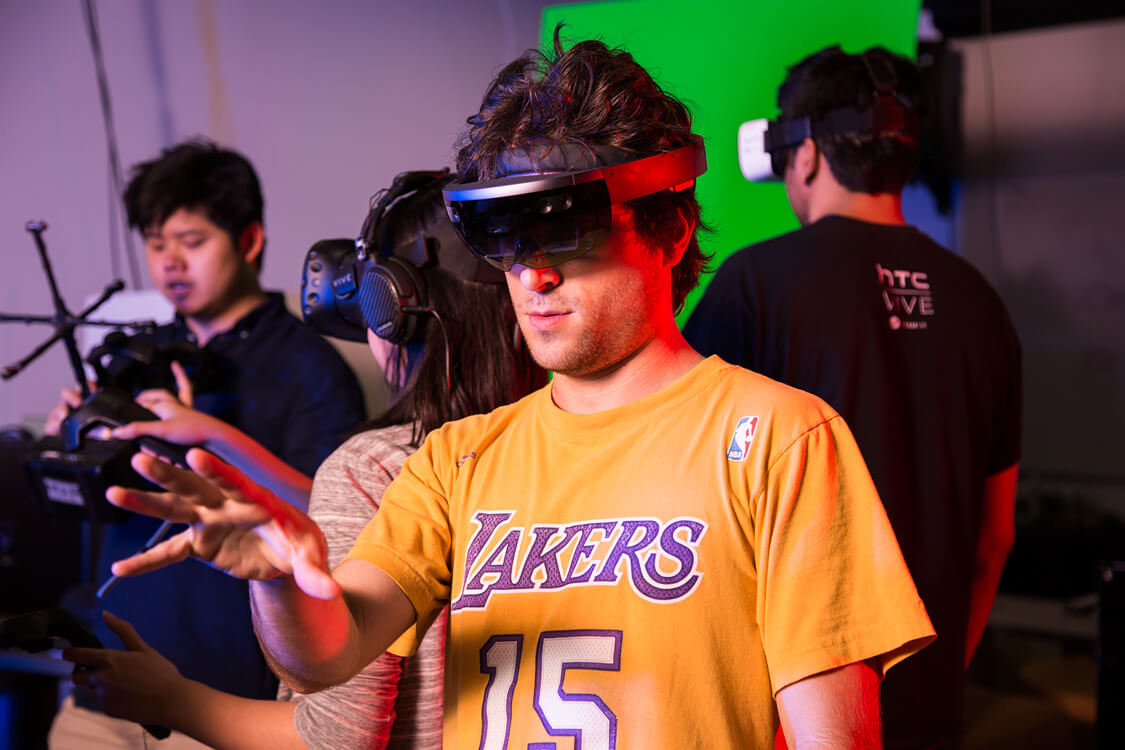A Story Fest with a Twist
Limes regiones rerum means Reality ends here.
The Latin phrase carved above the entrance to the USC School of Cinematic Arts welcomed industry professionals, students and technology enthusiasts on April 15 to the first-ever Virtual Reality Festival at USC, organized by Club VRSC, a trendsetter in the student VR movement.
A year after its founding, VRSC has exploded into an energized a hub of students, staff and faculty who came together from various disciplines to test the bounds of virtual reality.
Don’t call it simply a festival, call it a “revolution in storytelling,” according to VRSC organizers who also invited students from the University of California, San Diego, UCLA, Chapman University, Loyola Marymount University and the University of Colorado, Boulder to participate.
Title sponsor Disney together with major VR players NVIDIA, Google, Maker Studios and Industrial Light & Magic’s X Lab formed a panel of judges and put up $25,000 in prizes to be split among winners in four categories: 360 Live-Action Videos, 360 Animation, Interactive VR Games and Augmented Reality.
In all, 34 student projects showcased eye-popping VR/AR works covering topics ranging from health care and journalism to games, interactive design and interpretive dance.
Jake Green, B.S. ME ’15, founded VRSC in 2015, fulfilling his dream of building a community where engineering and cinema students could get together and tell stories using virtual reality.
Now led by electrical engineering graduate student Jyotsna “Jyo” Kadimi, the club numbers more than 300 students from engineering, architecture, film, animation, business, medicine and music.
It’s a place where the engineer can be the creative and the creative can be the engineer.
— Jyostna “Jyo” Kadimi, VRSC president
“In reality, these people were not supposed to collaborate,” said Kadimi, who won the festival’s NVIDIA grand prize for “Jyo Rahi!,” a collection of three distinct experiences: a 360-video documenting her journey through iconic monuments such as the Taj Mahal, Eiffel Tower and Statue of Liberty; an augmented reality demo that lets people interact with her business card; and a virtual reality game that uses binaural audio. “But reality ends here.”
VRSC members believe this creative spark and their university-wide inclusiveness is what allowed them to blow open the vault of creative possibilities in VR.
“At the time we did a search, and as far as we know, we were the first VR club in the country,” said Green, who is now collaborating with the Smithsonian Institution to create a VR experience of the Wright Brothers’ first flight.
The festival is a living paradigm of the industry’s “cross-pollination,” said St. John Colón, who teaches advanced games at USC Viterbi’s GamePipe Lab, where many of these VR experiences are born.
“Look around, you’ll see VR pop up everywhere. Medicine, architecture, you name it,” said Colón, referring to Recall, a memory-enhancing game created by biomedical engineering senior Lukas Ferrer, and Sandbox VR, built by Ashok Kuruvilla, a graduate student in computer science, and Sagar Ramesh, an undergraduate in animation. Sandbox VR allows users to build virtual worlds with their own hands.
As VRSC continues to take virtual reality into uncharted realms, it wants to maintain that original spark, creating a VR sandbox for all students.
“I can’t wait to see how we can integrate this with urban design and landscape architecture,” said Blake Weber, a master of landscape architecture and urban planning student at the USC Price School of Public Policy, who was at the festival looking to collaborate with content creators and engineers like Ramesh and Kuruvilla.




